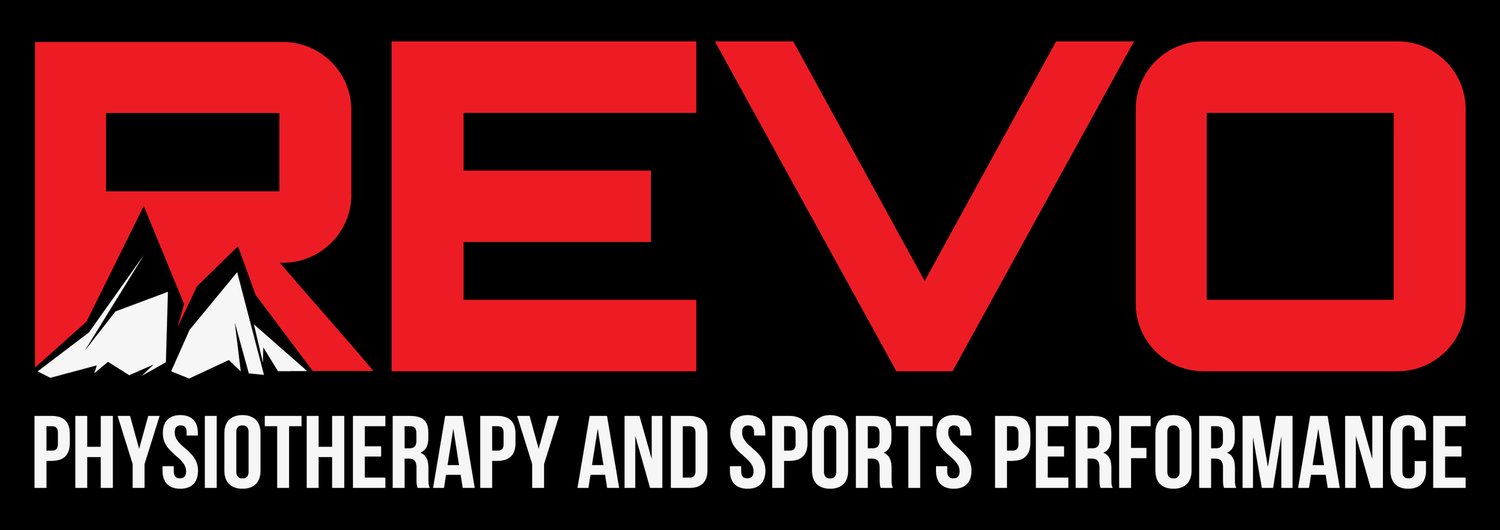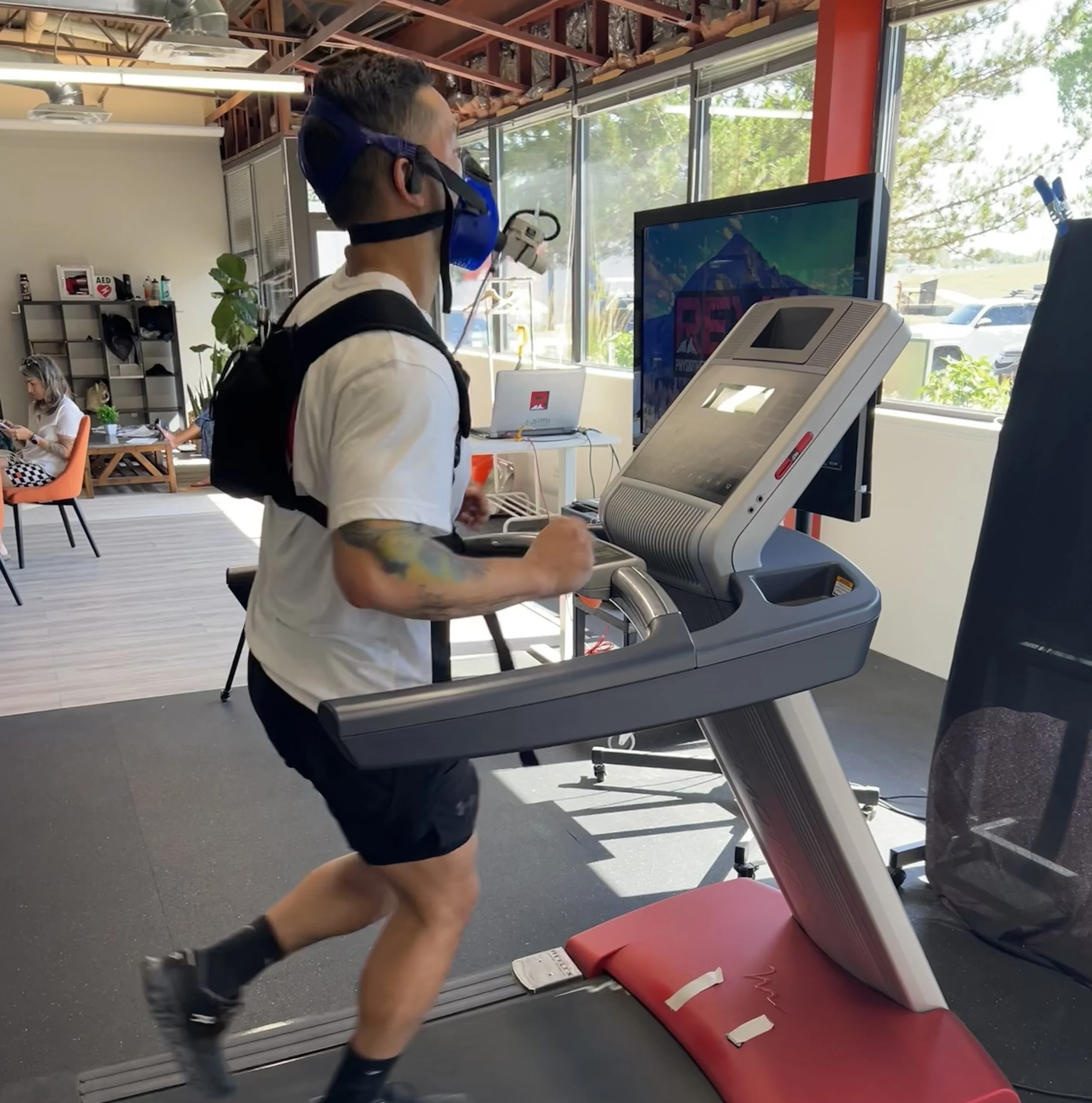
Metabolic Testing
Metabolic health is a way to describe how our body utilizes and generates energy. These complex processes affect our exercise performance, cognitive function, body composition, mood and even risk for disease.
Fitness testing, V02
This test is done with the mask you see above. This is measuring the air as you inhale and exhale, allowing us to measure a wide range of metrics as it relates to your health and wellness. We prefer to do this test on a treadmill if you run or on a bike trainer if you are a cyclist. The test is short, approximately 20 minutes, but difficult in intensity.
This test will allow us to help you set your training zones based on heart rate or power if you use a power meter on your bike. We will also gather information on what fuel source you are using during each zone. This can help inform fueling decisions for training and racing.
You can schedule this test below in the scheduling widget.
We will also calculate a few important metrics that you or your coach can use to track progress toward your goals
Fat max is a threshold during exercise where you are burning the most amount of fat and the least amount of carbohydrate.
Ventilatory threshold 1 (VT1) is the exercise intensity are which we consider you to be truly working out.
V02 max is the maximum oxygen consumption in ml/kg/min during the test. This
Ventilatory threshold 2 (VT2) is the exercise intensity at which the body transitions into Zone 5 where anaerobic metabolism becomes a large part of the body’s energy generation.
Who is this test for?
Cyclists, runners, or endurance athletes of any discipline looking to optimize training.
Those interested in weight loss will benefit greatly from the information gathered during this test.
Individuals interested in longevity and improving their health span.
Strength or traditional team sport athletes looking to gain an edge and find missing links in their performance metrics.
Anyone looking to progress towards their goals of muscle gain, aerobic fitness gain and/or weight loss.
-
Aerobic health is a gauge of your overall health and provides the strongest predictor of how long and how well you will live. It’s also one of the most vital indicators of athletic performance.
Your body needs oxygen to break down nutrients (e.g., fats, carbs, proteins) and power the movement you are asking it to do. When oxygen supply is disrupted or becomes insufficient based on the energy demands of your activity, your body will shift to Anaerobic Metabolism, a process that is unsustainable and produces fatigue. Hence, the more oxygen your body can absorb, the more movement it can produce without getting tired.
Oxygen is the molecule of life. It’s the a critical element for your metabolism, namely the process by which your cells "burn" nutrients (e.g., fats, carbs, proteins) to release their energy and keep you alive and moving. Your heart, lungs, and muscle all participate in this process. Whenever any of them suffers, your Aerobic Health will be immediately reduced. That’s why The American Heart Association has recognized it as the most holistic gauge of your overall health. It’s also no surprise that every significant chronic condition (i.e. cardiovascular disease), COPD, metabolic syndrome is related to these systems and is manifested when their ability to uptake or utilize oxygen is reduced.
-
Cardiovascular fitness a gauge of your cardiovascular system’s ability to pump oxygen-rich blood to your body. Your cardiovascular system includes: your heart, blood vessels (i.e. arteries, veins), blood (i.e. what flows within your arteries and veins).
Your body needs oxygen to break down nutrients (e.g., fats, carbs, proteins) and power the movement you are asking it to do. When the oxygen supply is disrupted or becomes insufficient based on the energy demands of your activity, your body will shift to Anaerobic Metabolism, a process that is unsustainable and produces fatigue. The cardiovascular system pumps oxygen to your cells and is thus a critical system in keeping your body continuously moving.
Cardiovascular disease is the number one cause of death and includes several life-threatening conditions such as ischemic heart disease (AKA Coronary Artery Disease), heart failure, and valvular disease. A low VO2peak score combined with a flattening or decline in O2pulse is considered a reliable risk factor for them, one which can help you act early.
-
Breathing and stability is a gauge of how your breathing affects your posture, likelihood of musculoskeletal injury, and lower back pain.
Abnormal breathing patterns are critical contributors to musculoskeletal injuries across all sports. Moreover, they directly reduce performance in endurance sports by reducing movement economy and increasing the rate with which your body accumulates fatigue. Correcting breathing abnormalities that destabilize your core is one of the easiest and most impactful wins in your training.
Abnormal breathing patterns are the most significant risk factor for musculoskeletal problems like lower back pain which currently represents the most significant burden to health systems and one of the most important factors reducing the quality of life. Correct breathing will vastly improve posture, feelings of musculoskeletal pain, and quality of life.
-
Breathing and cognition is a gauge of how your breathing affects your cognitive function during exercise.
Hyperventilation during training reduces oxygen delivery to the brain almost immediately, causing you to react slower and respond less effectively to situations requiring rapid reflexes. Hyperventilation doesn’t only occur during high exercise intensities. More than 30% of athletes suffer from subtle breathing abnormalities in low to medium exercise intensities, as well, impacting their cognitive function during most of their athletic performance.
Hyperventilation is considered one of the most common but under-diagnosed conditions that severely impact the quality of life in our society. It’s estimated that 15% of the population chronically hyperventilates, with only a few knowing about it. Chronic hyperventilation reduces cognitive function at work, increases feelings of fatigue, and is associated with higher rates of anxiety and panic attacks.
-
Metabolic rate is a gauge of how fast or slow your metabolism is. In other words, whether your body is burning more or fewer calories than what’s predicted based on your weight, gender, age, and height.
A high Metabolic Rate (i.e., having both a high Resting Metabolic Rate and low mechanical efficiency), indicates low levels of exercise-related fatigue. A reduction in Resting Metabolic Rate and/or an increase in Mechanical Efficiency at low exercise intensities is highly correlated with undue exercise strain accumulation.
A high Metabolic Rate will protect you from weight gain as your body will burn more calories, thus allowing you to eat more without gaining weight. It also facilitates weight loss as burning more calories means that even a modest restriction in food intake will result in a meaningful weight loss. A high Metabolic Rate is attained through a high Resting Metabolic Rate and a low Mechanical Efficiency at low exercise intensities.
Breathing & Cognition 69%
-
High intensity performance is a gauge of how well your lungs and heart perform at high exercise intensities.
Having a high and continuously increasing O2 Pulse and VO2/BF throughout high exercise intensities will ensure that sufficient oxygen is delivered to your working muscles. This will, in turn, ensure your body remains predominantly in the aerobic state when exercising at high intensities and therefore prevent metabolic fatigue.
Having a high and continuously increasing O2 Pulse and VO2/BF throughout high exercise intensities will ensure that sufficient oxygen is delivered to your working muscles. This will, in turn, ensure your body remains predominantly in the aerobic state when exercising in high intensities, thus allowing you to work out in intensities where you burn the most calories.
-
Fat burning efficiency is the gauge of your cells’ ability to use fat as a fuel source during exercise. Your cells primarily "burn" fats and carbohydrates to release the energy they contain and power your body’s movement. The higher your Fat-burning Efficiency, the more your cells will rely on fats as a fuel source. Fat-burning Efficiency is also one of the most vital indicators of cellular health.
Fat is a fuel source that’s abundant and sustainable for your body. It’s abundant since the average person’s body can typically store ~30,000 kcal worth of fat (vs. ~2,000 kcal worth of carbs) and sustainable because it doesn’t produce fatigue to the working muscles when utilized. Therefore, the greater your Fat-burning Efficiency is, the higher your ability to exercise longer and harder.
Fat is a fuel source that requires oxygen to be "burnt." The more oxygen your cells can uptake and utilize, the healthier they are and the more they can rely on fat as a fuel source. That’s why Fat-burning Efficiency is one of the most powerful indicators of cellular health, which is strongly correlated with longevity and health.
-
Movement economy is a gauge of how many calories you burn during exercise. In other words, it demonstrates whether your body burns more or fewer calories than what’s predicted based on your gender, and age.
Having a high Movement Economy is valuable for all sports and especially for endurance sports. It ensures your body will require less energy to function, it results in reduced food intake during athletic events, and minimizes metabolic fatigue.
Staying lean or losing weight requires having low Movement Economy at low exercise intensities (e.g., casual walking, or in other words having a low Mechanical Efficiency. In plain words, you want your body to be uneconomical and burn a high number of calories during your daily activities. Check your Metabolic Rate score for more information on how Mechanical Efficiency can impact your metabolism and your ability to lose weight.
-
Recovery capacity is a gauge of your ability to efficiently recover from physical exercise.
Having a high Recovery Capacity is essential for every sport and especially for dynamic ones (e.g., basketball) where there is a continuous change between exercise bouts following recovery phases. The higher your Recovery Capacity is, the greater your body’s ability to recover and the lower the fatigue it accumulates.
Having a high Recovery Capacity is essential for any type of workout and especially for interval training (e.g., spinning) where there is a continuous change between exercise bouts following recovery phases. The higher your Recovery Capacity is, the greater your body’s ability to recover, the longer you can exercise, and the more calories you will burn.
What will we measure and be able to track from the fitness test?
Resting metabolic rate testing, RMR
Your resting metabolic rate (RMR) is the amount of energy your body burns at rest. It is one of three components of your total metabolic rate, comprising 70 percent of your body’s daily energy expenditure. This test is done with the same mask we use in the fitness test but you are totally at rest during.
We will gather information about your resting metabolism and how you utilize fat vs carbohydrate when not exercising. This can help determine what the right dietary choices are for your body and what changes are required to achieve your goals.
You can schedule this test above in the scheduling widget. 60 minutes


